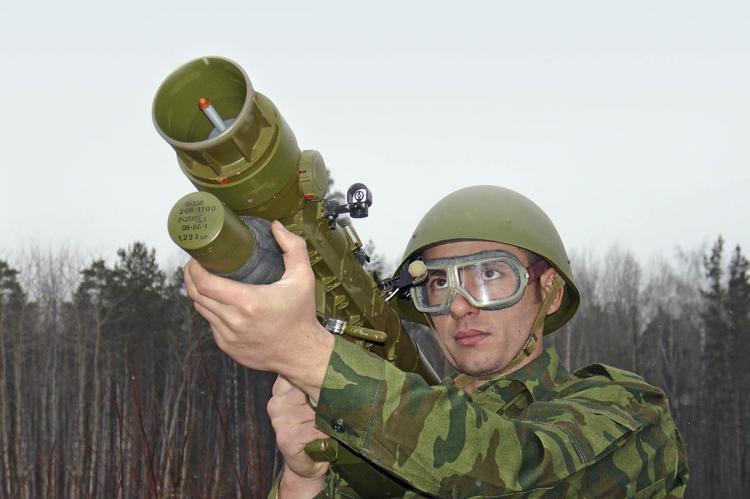Igla-S – the new UCAV Killer
By Rohit Srivastava
On July 21, Russian Ministry of Defence, announced interception of the last of the Ukrainian TB-2. The Turkish made unmanned aerial combat vehicle was intercepted in the Kherson region by Dnepr group of the Russian armed forces. A video footage of the TB-2 wreckage was also released by Russia on Zvezda TV.
Russia attributes the kills to shoulder-fired Igla-S man-portable air defence system (MANPADS). This would be the first kill of TB-2 by very short-range air defence system.
“The drone fell from a height of two kilometers, but many important elements remained intact. They were handed over for further study to military engineers, and dominance in the sky over the islands and on their territories still remains with Russian forces,” Zvezda reported.
Reportedly, with this kill, Russia has eliminated all of the Ukrainian TB-2. According to Oryx, an independent open source monitoring site, Russian forces have eliminated 25/25 Ukrainian TB-2.
Russia Success in Air Defence
The British military think tank, Royal United Services Institute, in May, accepted the rising efficiency of Russian air defence systems against the Ukrainian air elements. “The performance of Russian air defence systems has steadily improved,” it said.
Discussing the efficiency achieved through inter-connection of short-range air defence (SHORAD) and fire control radars which improved the collection of tracking data and situational awareness, RUSI said, “This has had two principal effects. First, the long-range radar, combined with systems such as the 48Ya6 ‘Podlet-K1’ all-altitude radar, have proven highly effective in denying airspace to Ukrainian aviation. Second, Russian SHORAD systems have massively improved their point defence efficiency. Along with the successful interception of most high-speed anti-radiation missiles (HARMs) fired by Ukrainian aircraft, the Russian air defence network is now assessed to be achieving a significant number of intercepts against GMLRS munitions.”
What is the significance?
TB-2 has a reputation of wiping out air defence and land systems. Last April, when TB-2 entered the battle from Ukrainian side it was considered as the ace in the armoury of Kiev. After the initial success, the UCAV has not fared as expected and Russian air defence and electronic warfare systems had managed to maintain an upper hand against them.
By design, MANPADS are best suited for helicopters and low flying fighters/bombers. They are part of the infantry unit to defend against land attack by enemy air elements. They are at the lowest echleon of the air defence hierarchy.
The MANPADs operation is mostly based on visual identification of the aerial threats and then using heat seeking missiles to shoot them down which are time sensitive. Unlike fighters and helicopters, UCAVs can arrive in a battle space at very low altitude (tree hugging altitude), comparatively smaller in size, difficult to identify against a clear sky and very low heat signature, these makes them difficult to intercept by MANPADS.
The significance lies in the very fact that MANPADS, which are in abundance in any army, can be used to eliminate UCAV, then armed forces would be able to eliminate one of the most challenging modern threat to land forces. An UCAV can arrive from any point in enemy territory and can attack land forces, providing defence against UCAV and loitering ammunition is the single biggest challenge for all armed forces of the world. With this success, Russia probably has found a cheaper answer to UCAVs.
The System
Weighing less than 19 kg the Igla-S system, comprised of 9M342 missile and 9P522 launcher, can engage all kinds of aerial targets including cruise missiles within a range of six kilometres. It is one of the most advanced MANPADS in the world. Much improved version of the Igla-M operated by many militaries across the globe including India.
In 2018, Igla-S won the Indian Army’s competitive bid for very short range air defence (VSHORAD) system defeating French MBDA Mistral and Swedish Saab’s RGS 70NG. Indian Army is looking for around 5100 VSHORAD missiles to replace its existing arsenal of Russian Igla-S missiles inducted some four decades back. In 2018, the contract was expected to cost over $1.5 billion to Indian exchequers. The contract would include around 800 single and 500 multiple launcher. The purchase contract was never signed.
During the AeroIndia 2023, Director of the Federal Service for Military-Technical Cooperation Dmitry Shugayev told Russian media that the contract for the Igla-S is awaiting approval. “We are looking forward to the Indian side’s decision on signing the contract on the supply and licensed production of Igla-S man-portable air defence systems," he said.
Given the emerging air defence challenges and the success of Igla-S in shooting down of TB-2, this gives India reasons to revisit the contract.
Specification :-
Engagement altitude (m) - 10 to 3500
Max engagement range (m) - 6000
Target speed, m/s:
head-on - up to 400
receding - up to 320
Weight of combat assets (kg) - not more than 19
Time to bring Igla-S from travelling to combat position (s) - not more than 13
Reaction time (s) - not more than 5
Operating temperature range (C) – 44 to + 50
Missile caliber (mm) - 72
Missile length (mm) - 1635
Missile weight (kg) - 11.7
Seeker type -IR, tracking, passive
Warhead type -HE
Fuze type - delayed impact, proximity
Self-destruction time(s) - 13-14
Combat crew - 1

